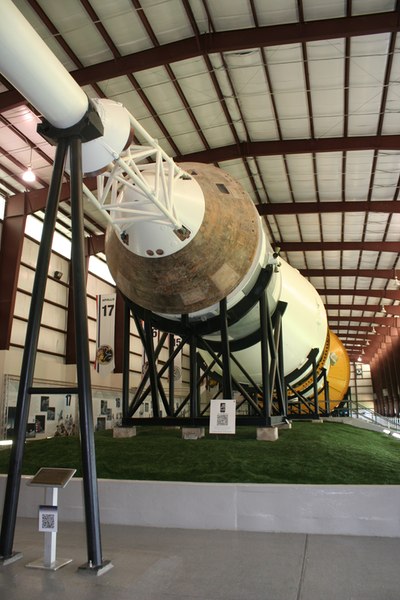Giants in glass housesby Dwayne A. Day
|
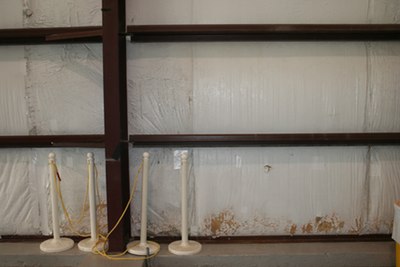 The temporary building hosting the Saturn V is showing signs of deterioration. (credit: D. Day) |
Space Center Houston’s Saturn V is located in a temporary building that is not on the actual museum grounds. The building looks like a large shed, and lacks the dramatic windows of the other two facilities. Unlike the other Saturn V rockets, the public can see it for free, if they know how to reach it and are not intimidated by the fact that they have to go through the Johnson Space Center security gate in order to pull into the parking lot.
The building is well-lit, but relatively simply outfitted on the inside, without much room either in front of or behind the vehicle. The building includes wall displays, but no other artifacts or media like at the other two sites. Unfortunately, although intended as a temporary structure, and erected in the middle of the last decade, such buildings often have a tendency to become permanent.
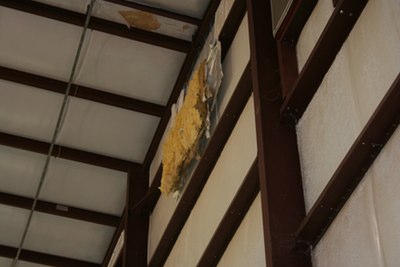 The temporary building hosting the Saturn V is showing signs of deterioration. (credit: D. Day) |
What is more dismaying is that the building containing the Saturn V is starting to deteriorate. Interior insulation is starting to crack and peel, showing considerable degradation from my last visit a year ago. This simply reinforces the impression that the Saturn V is being stored in a big garage.
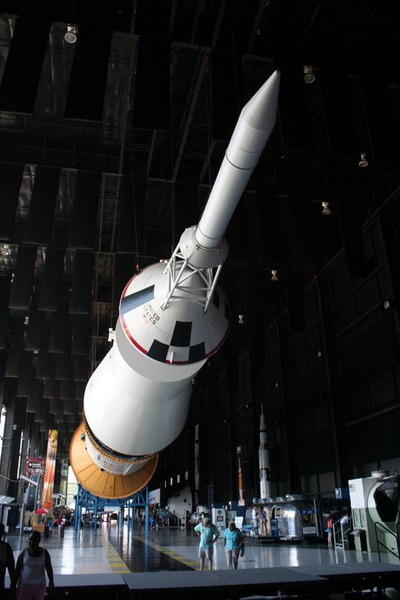 By comparison, the Saturn V is presented much better in Huntsville… (credit: D. Day) |
Houston has had the Saturn V for decades. It has housed it indoors for almost seven years, and yet the city has not improved the presentation or shown any indication that it intends to display the Saturn V with any of the affection and intelligence that the Kennedy and Huntsville communities have given to their Saturn Vs. If you look at what Houston has done it is hard not to wonder if they would have treated a shuttle orbiter with the same indifference.
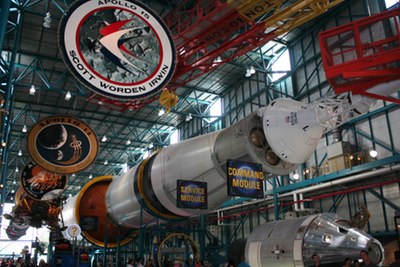 …and the Kennedy Space Center in Florida. (credit: D. Day) |
Maybe being overlooked for a shuttle will be a wakeup call for Space Center Houston to get their act together and start aspiring to be like the better space museums. Houston has been swimming in petrodollars for a long time now, so money is not an issue; a good fundraising effort should be able to gather more than enough money from the local community. What matters is organization and leadership, and based upon the degradation of the Saturn V building, and Space Center Houston’s unenthusiastic display of a rare piece of space history, those requirements appear to be in short supply.
